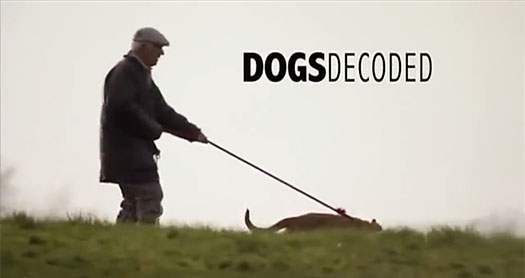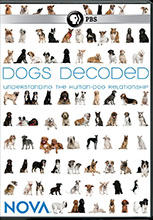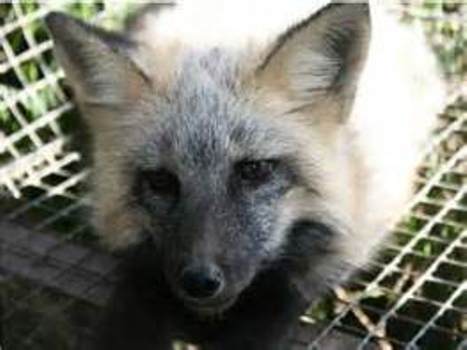
 BUY FROM AMAZON: CLICK HERE!
BUY FROM AMAZON: CLICK HERE!
MSRP $24.99
RATED NR
STUDIO PBS
RUNNING TIME 56 minutes
SPECIAL FEATURES
- Just scene selection (come on, this is a Nova episode, what do you expect?)
The Pitch
With today’s research on dogs, soon you could be spooning in bed with a Siberian silver fox.
The Humans
Scientists and researchers with long names.
The Nutshell
Through a series of scientific studies from around the world, you’ll find out how dogs communicate with humans in a way no other animal does. You’ll also learn how an animal that’s so genetically similar to wolves is so unlike a wolf in behavior. You’ll want to cuddle with your dog while you watch this one.
The Lowdown
Stop reading if you think dogs are smelly and dirty (you’re dead inside, aren’t you?). But if you consider your dog an important part of your family, Dogs Decoded will show you how it is that these domesticated wolves became uniquely tailored to be humans’ co-workers and friends (yes, you’ll see genetic proof that dogs are domesticated wolves). And even if you don’t like dogs, take a moment to thank them since, according to one of the geneticists in the documentary, human civilization wouldn’t be possible without dog domestication.
Am I qualified to review this documentary? I bought a bigger bed and couch so my dog could comfortably snuggle with me. I changed jobs two years ago so I could spend more time with my dog. In bar trivia last month, I answered four of the five dog questions correctly. Either I’m qualified, or just a crazy dog lady. Probably both.
Dogs Decoded showcases a series of scientific studies from around the world. Through them, you’ll find out how dogs adapted to communicate with humans in a way no other non-human animal does. In an hour, you’ll have a better understanding of why your cat seems like such a jerk and your dog such a co-dependent pussy. There are lots of British and German accents, so everything sounds even more important. There are even some little kids with British accents — which just makes all the kids in America sound like idiots.
The documentary opens with this statement: There are more pet dogs than babies in the world — half a billion. And why not. Dogs are easy love. You can’t leave a baby at home alone while you’re at work. Or the casino. Or you shouldn’t…but I guess plenty of people do. I wouldn’t trust those people with a dog, either.
(Pause here to wipe off the drool my dog just left on my laptop charger while he watched me eat beef jerky.)
The first few studies show how dogs uniquely tune in to human emotion. Through studying a series of dogs, scientists in England found that dogs look at humans’ eyes to understand their emotions. This isn’t something dogs do with each other, and it isn’t something any other animal does. Not only do dogs look at humans’ eyes, but they specifically look to the right-side of the human face — where scientists have determined we register the most emotion. Seriously, your cat just doesn’t care how you feel.
At a Budapest research facility, scientists found that dogs alter their barks to communicate different emotions to humans. Wolves in the wild only bark as a warning. So while being domesticated, dogs created a wide repertoire to communicate. And a German psychologist found that only dogs understand what humans are communicating when they point. Not even chimpanzees — our nearest primate relatives — look in the direction that a human points.

No animals were hurt in the making of this documentary. I don’t think.
You’ll also find out that dogs and wolves are 99.8% genetically identical, based on mitochondrial DNA sequences (wha? Rewound the DVD three times to understand what was actually being said) — which apparently pass unchanged down the maternal little. That’s the most science-y stuff you’ll have to get through. But just because dogs are domesticated wolves, it doesn’t mean you can grab a wolf from the forest and have the same relationship you would have with a domesticated dog. Two of the studies in the documentary prove domestication is a genetic change over time.
This is where you’ll start dreaming of snuggling with a Siberian silver fox. A study in Siberia found that after three generations, they were able to breed aggressive behavior out of the foxes, and in the eighth generation, the foxes were wagging their tails at the sight of humans and licking human faces. Even the fox appearances changed over time, so they retained their pup-like attributes — like floppy ears and curly tails. A few of the other studies included in the documentary explain how wolves were selectively bred to have big foreheads and eyes, like a human baby, and how that awakens the instinctual nurturing need in humans.

Waiting to cuddle with you. And chew through all the electrical cords in your house.
And the documentary ends with this heart-warming thought:
“We can think of puppies as parasites. They don’t do anything useful, they’re not a food source. They’re simply brought home for fun. ” –Peter Rowley-Conwy, England’s Durham University
Don’t waste any more time watching Cesar Millan reruns featuring his questionable opinions on dog behavior. Learn about your dog from some real science.
The Package
No special features to review.
Rating: 




Out of a Possible 5 Stars